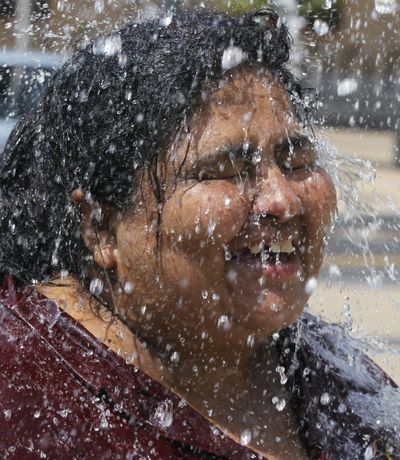Heat wave in East, South, a harbinger

WASHINGTON – The mercury climbed into the 90s across half the country Wednesday in a record-breaking blast of August-like heat, forcing schools with no air conditioning to let kids go home early and cities to open cooling centers. And scientists say we had better get used to it.
A new study from Stanford University predicts that global climate change will lead permanently to unusually hot summers by the middle of the century.
Temperatures in the 90s were recorded across much of the South, the East and the Midwest. Baltimore and Washington hit 99 degrees, breaking high-temperature records for the date that were set in 1999, according to the National Weather Service. The normal high for the date is about 82.
Youngsters sweltered in Hartford, Conn., where school would have ended for the summer by now if not for the heavy snows last winter that led to makeup days. “I’m not even going to go outside this summer if it’s going to be like this, unless my mom makes me,” said seventh-grader Kemeshon Scott in a school with no air conditioning.
Cooling centers were opened in cities such as Chicago, Memphis, Tenn., and Newark, N.J. City officials in Norfolk, Va., teamed up with nonprofit groups to deliver cold water and sunscreen to the homeless.
The 6-to-10-day outlook from the federal Climate Prediction Center calls for continued above-average readings centered on the mid-South and extending as far as the Great Lakes, New York and New Jersey.
At Stanford, Noah S. Diffenbaugh and Martin Scherer analyzed climate models and concluded that by midcentury, large areas of the world could face unprecedented heat. They said the coolest summers will be hotter than the hottest of the 1900s.